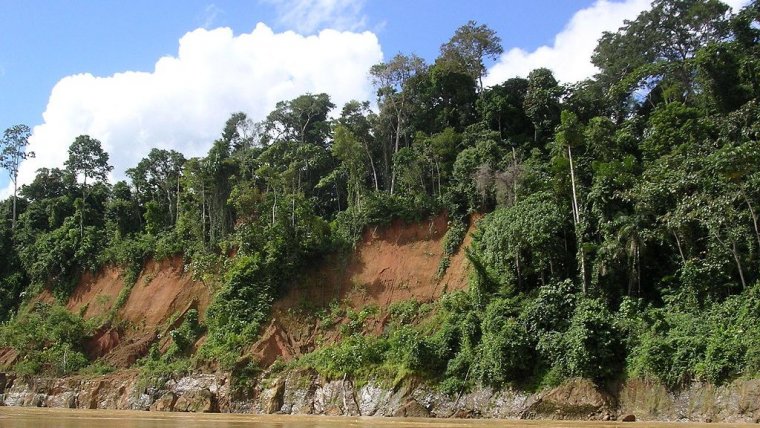| News / Science News |
Natural regeneration of tropical forests helps global climate mitigation and forest restoration
NSF | MAY 17, 2016
An international team of 60 scientists, working together as the 2ndFOR Network, has completed studies on the effects of forest conservation and secondary forest regeneration across 43 regions in Latin America.

Amazon River rain forest in Peru. ![]()
Climate scientists have long recognized the importance of forest conservation and forest regrowth in climate mitigation and carbon sequestration -- capturing carbon dioxide (CO2) from the atmosphere. But the detailed information required to make accurate estimates of this potential has remained elusive.
The studies aimed to model the areas covered by regrowth forests across the lowlands of the Latin American Tropics in two age classes; to project potential above-ground carbon storage in these young forests over four decades; and to illustrate alternative scenarios for carbon storage where 0-80 percent of these forests are allowed to regenerate.
Models of forest age in 2008 show that 17 percent of the forest area in lowland Latin America consists of young second-growth forest (1-20 years) and 11 percent consists of intermediate age forest (20-60 years).
Assuming that 100 percent of the second growth persists and regenerates over 40 years, carbon storage capacity doubles in young second growth and increases by 120 percent in intermediate age forests. In both forest age classes, a net gain of 8.48 trillion kilograms of carbon is stored over 40 years.
This amount is equivalent to 31.09 trillion kilograms of CO2, which equals all the carbon emissions from fossil fuel use and other industrial processes in all the countries of Latin America and the Caribbean from 1993 to 2014.
Ten countries account for 95 percent of this carbon storage potential, led by Brazil, Colombia, Venezuela and Mexico.
This huge amount of carbon storage doesn't require costly tree plantings or conversion of farmlands. It is all based on natural forest regrowth and only requires persistence and protection of the young forests and abandoned agricultural fields.
Prior carbon storage efforts have placed emphasis on avoiding deforestation. But, avoiding deforestation and supporting forest regeneration are complementary and mutually reinforcing activities.
YOU MAY ALSO LIKE




